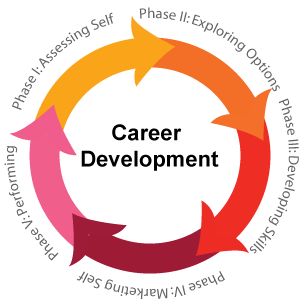When writing a career development guide, it’s important to provide a balanced perspective, highlighting both the opportunities and challenges that professionals might encounter. Here’s a structured approach for an article that covers both positive and negative aspects:
Title: Navigating Career Development: Opportunities and Challenges
Introduction
- Briefly introduce the concept of career development.
- Emphasize the importance of continuous learning, growth, and adaptability in today’s ever-changing professional landscape.
- Mention that career development comes with its share of positives and challenges.
1. Identifying Career Goals and Pathways

Positive Aspects:
- Clarity in Direction: Setting clear goals gives professionals a sense of purpose and direction.
- Increased Motivation: When you know what you want, you’re more motivated to pursue it.
- Strategic Growth: With a defined pathway, it’s easier to identify growth opportunities, such as certifications, skills, or promotions.
Negative Aspects:
- Uncertainty: It can be difficult to identify long-term career goals in a rapidly evolving job market.
- Overcommitment: Too much focus on a specific path can lead to missed opportunities in other areas.
- Pressure: Feeling the need to define goals early on can create stress, especially when those goals change over time.
2. Acquiring New Skills and Education
Positive Aspects:
- Skill Enhancement: career development Learning new skills keeps professionals competitive and increases their marketability.
- Career Flexibility: Continuous education allows professionals to pivot into new roles or industries.
- Personal Satisfaction: Acquiring new knowledge fosters a sense of achievement and personal growth.
Negative Aspects:
- Time and Financial Investment: Upskilling often requires significant time and money, which can be burdensome.
- Obsolescence:career development Skills acquired today may become outdated quickly, requiring constant learning to stay relevant.
- Burnout: Continuous pursuit of new skills without breaks can lead to fatigue and burnout.
3
Positive Aspects:
- Access to Opportunities: A strong network can provide job leads, mentorship, and collaboration opportunities.
- Support System: Colleagues and mentors offer guidance, emotional support, and career advice.
- Collaboration and Learning: Networking exposes professionals to diverse ideas, knowledge sharing, and different career paths.
Negative Aspects:
- Time-Consuming: Building meaningful relationships takes time and effort, which can detract from other professional or personal responsibilities.
- Inauthentic Interactions: Networking can sometimes feel transactional or forced, especially if people are connecting solely for personal gain.
- Exclusivity: Some professional circles can be difficult to break into, making it harder for some individuals to build a strong network.
4. Navigating Career Transitions
Positive Aspects:
- Fresh Opportunities: Transitions allow for a reset and the chance to explore new, exciting career paths.
- Skill Transferability: Skills gained in one field can often be applied in another, opening doors to new industries or roles.
- Growth Potential: Career changes provide opportunities to grow, both professionally and personally.
Negative Aspects:
- Uncertainty: Changing careers or roles can bring financial instability or anxiety about starting from scratch.
- Skill Gaps: Transitioning into a new field may require additional education or certifications, creating a temporary setback.
- Rebuilding Credibility:career development Professionals may have to rebuild their reputation, network, and career momentum in a new field.
5.
Positive Aspects:
- Enhanced Productivity: Finding a balance can lead to higher job satisfaction and improved productivity at work.
- Mental and Physical Health: A balanced lifestyle promotes better mental and physical well-being, reducing burnout.
- Long-Term Sustainability: Achieving work-life balance helps in maintaining a sustainable career in the long run.
Negative Aspects:
- Career Sacrifice: Prioritizing personal life can sometimes lead to slower career progression or fewer opportunities.
- Cultural Expectations:career development Some industries or employers may expect longer work hours, making balance difficult to achieve.
- Guilt: Professionals may experience guilt for prioritizing personal time over career ambitions or vice versa.
Conclusion
- career development Summarize the importance of a well-rounded approach to career development.
- Acknowledge that while there are challenges, the positives often outweigh the negatives when managed effectively.
- Encourage readers to continually assess their career path, remain adaptable, and pursue both professional success and personal fulfillment.























